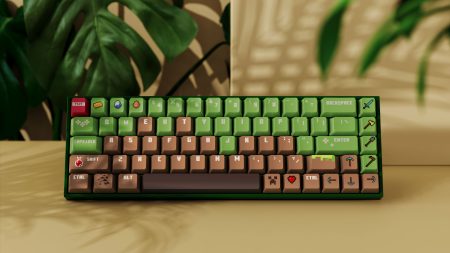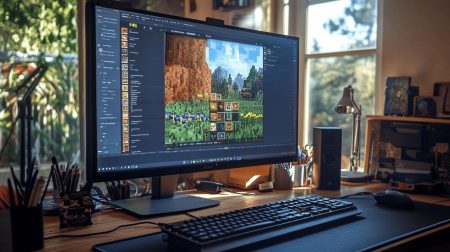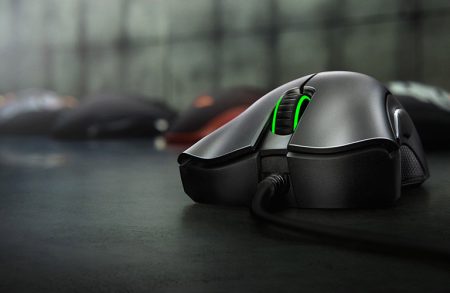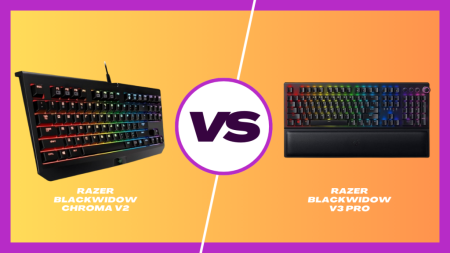The Best GPU for Plex Transcoding
Regarding Plex transcoding, the NVIDIA GeForce RTX series GPUs are highly recommended. They offer excellent performance and hardware acceleration capabilities, ensuring smooth and efficient video transcoding. The RTX 3080 and RTX 3090 are particularly popular for their power and reliability.
Choosing the right GPU is crucial if you’re looking to optimize your Plex Media Server for transcoding. A powerful graphics card can significantly improve the performance and quality of your media streaming. This article will explore the top GPUs recommended for Plex transcoding and provide valuable insights to help you make an informed decision.
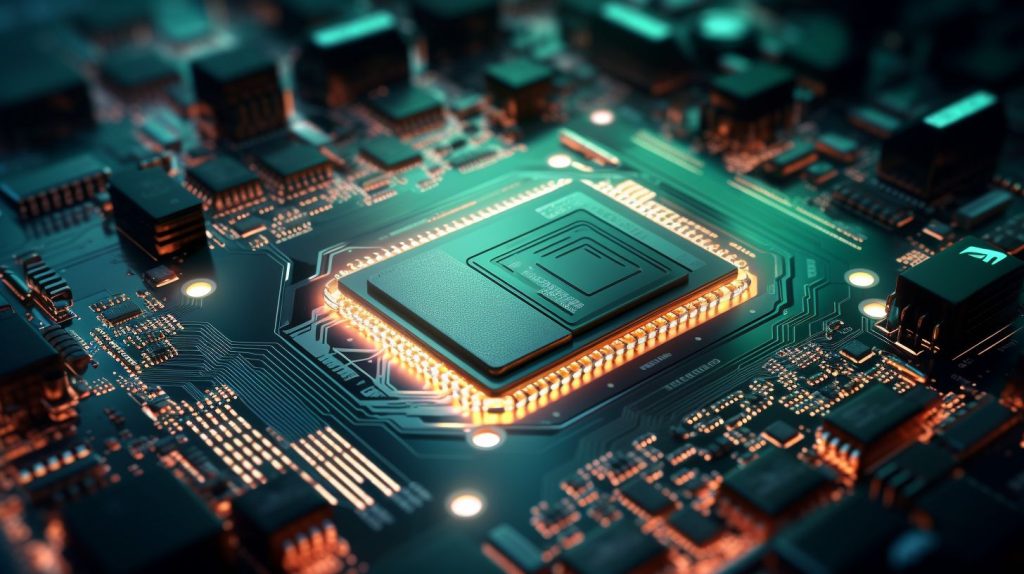
Why Choose a GPU for Plex Transcoding?
Before we delve into the top GPUs for Plex transcoding, let’s explore why a GPU is crucial for this task. Plex Media Server relies on hardware acceleration to convert real-time media files, ensuring seamless playback across multiple devices. While CPUs can handle transcoding, GPUs shine in parallel processing, making them more efficient and capable of handling numerous streams simultaneously.
Recommended GPUs for Plex Transcoding
Based on extensive research and user feedback, here are some of the top GPUs for Plex transcoding:
- NVIDIA Titan RTX: Considered the best overall GPU for Plex transcoding, the NVIDIA Titan RTX offers exceptional performance and easily supports multiple 4K streams.
- GTX 1050 Ti: If you’re on a budget, the GTX 1050 Ti is a great option. It provides reliable transcoding capabilities for smaller media libraries.
- RTX 3060: The RTX 3060 is a popular choice among Plex users. It balances performance and affordability, making it suitable for most home setups.
- Nvidia Quadro RTX 5000: If you require professional-grade transcoding capabilities, the Nvidia Quadro RTX 5000 is worth considering. It can handle demanding workloads and ensures high-quality output.
Top 4 GPUs For Plex Transcoding – Comparison Table
| Product | Price | GPU Clock Speed | Graphics Ram Size | Brand | Graphics Coprocessor |
|---|---|---|---|---|---|
| NVIDIA Titan RTX | $1,790.00 | 1350 MHz | 24 GB | NVIDIA | TITAN RTX |
| GTX 1050 Ti | $269.00 | 1316 MHz | 4 GB | Gigabyte | GeForce |
| RTX 3060 | $320 | 1837 MHz | 12 GB | MSI | NVIDIA GeForce RTX 3060 |
| Nvidia Quadro RTX 5000 | $729.00 | – | 16 GB | PNY | NVIDIA Quadro RTX 5000 |
This table summarizes the key specifications for each product. Price, GPU clock speed, graphics RAM size, brand, and graphics coprocessor are all included. If a certain attribute wasn’t provided for a product, a “-” is present to indicate missing information.
1. NVIDIA Titan RTX

(Images Credits: Amazon)
Unmatched power for seamless Plex transcoding and gaming.
Highlights
- HDMI video output interface for easy connection to displays
- High GPU clock speed of 1350 MHz for fast and smooth graphics performance
- Large graphics RAM size of 24 GB for handling demanding tasks and applications
- From the reputable brand NVIDIA known for their quality products
- Features the powerful TITAN RTX graphics coprocessor for high-end performance
- Compact item dimensions of 12.95 x 3.66 x 6.89 inches, making it suitable for various computer setups
The NVIDIA Titan RTX holds an unchallenged position in the world of top-quality PC graphics cards. Touted as the fastest ever built, this powerhouse offers 24GB of ultra-fast GDDR6 memory that operates at 14 Gigabits per second for up to an effective rate of 672 GB/s memory bandwidth. This unprecedented speed makes it stand out in arenas like Plex transcoding where efficient handling and quick rendering times are essential.
This GPU boasts a robust structure with 576 Tensor cores designed specifically for AI acceleration and a hefty addition of 72 new RT cores for facilitating ray tracing – significantly improving overall visual performance and image quality. Particle simulations, object interactions, and lighting effects — all can be executed more accurately with these advanced capabilities under your hood. The cherry on top is its Turing architecture that allows clock speeds up to a phenomenal 1770 MHz, augmenting gaming experiences like never before.
Our choice for placing NVIDIA Titan RTX at No.1 on our list was driven by its exceptional features tailored towards high-end gamers and professionals who demand high-performance computing powers. Coupled with a recommended power supply wattage of just around 650W, we find it optimally balanced between efficiency and raw strength—making it the ideal candidate not just as a Graphics Card but also as the go-to solution for complex tasks such as Plex media server’s hardware-accelerated video transcoding.
Pros
- High memory capacity of 24GB for improved graphics and rendering performance
- Advanced AI acceleration with 576 Tensor Cores for efficient machine learning tasks
- Ray tracing acceleration with new 72 RT cores, enhancing visual quality and realism
- Powerful NVIDIA CUDA cores running at a boost clock speed of 1770MHz for fast processing
Cons
- Expensive price point
- Requires a high-wattage power supply
- Limited compatibility with older operating systems
Click here to View on Amazon.
2. GTX 1050 Ti

(Images Credits: Amazon)
Upgrade your gaming experience with powerful and affordable performance.
Highlights
- NVIDIA graphics processor for high-quality visuals
- 4 GB graphics RAM for smooth gaming performance
- The compact size of 6.8 x 4.5 x 1.2 inches for easy installation in any computer case
- Gigabyte brand known for reliable and durable products
- GeForce GTX technology provides excellent image rendering
- Supports up to 8k resolution for stunning visual display
The Gigabyte Geforce GTX 1050 Ti 4GB GDDR5 128 Bit PCI-E Graphic Card (GV-N105TD5-4GD) secures the No.2 spot on our list because of its substantial technical features and price-to-performance ratio, particularly when it comes to GPU for Plex Transcoding. It is an excellent choice for gamers and multimedia enthusiasts alike.
This graphics card is powered by GeForce GTX 1050 Ti, a strong competitor in the mid-range gaming sector. Integrating a hefty 4GB GDDR5 memory ensures smooth gameplay even at high settings or during challenging transcoding tasks in Plex, improving users’ experience dramatically.
Notably, this beast from Gigabyte has adopted new NVIDIA Pascal architecture, which offers improved performance and power efficiency – ensuring your system won’t get too heated up with extensive usage! Furthermore, it supports up to an impressive 8K display at a refresh rate of 60Hz, providing crisp resolution for classic and modern games set at 1080P and running beautifully at solid FPS. So whether you’re an avid PC gamer or simply looking for better video quality while streaming on Plex – the GTX 1050 Ti can do wonders!
In terms of design practicality, the custom-designed cooler includes a sizeable fan that keeps your GPU temperature under control without unnecessary noise interference.
Pros
- Enhanced gaming experience with the latest GeForce gaming features
- Supports up to 8K display at a smooth 60Hz refresh rate
- Improved performance and power efficiency with the new NVIDIA Pascal architecture
- Compatible with classic and modern games at 1080p resolution and 60 frames per second (FPS)
Cons
- May struggle to run demanding games at higher settings
- Limited VRAM may impact performance in certain games or applications
- Not as powerful as higher-end graphics cards on the market
Click here to view it on Amazon.
3. RTX 3060

(Images Credits: Amazon)
Ultimate GPU for flawless Plex transcoding and immersive gaming.
Highlights
- Video Output Interface: DisplayPort, HDMI
- Graphics Ram Size: 12 GB
- GPU Clock Speed: 1837 MHz
- Brand: MSI
- Memory Speed: 1837 MHz
- Max Screen Resolution: 7680 x 4320
Immersive gaming experiences demand powerful hardware, and the MSI Gaming GeForce RTX 3060 is a standout contender. This graphics card is built on NVIDIA’s 2nd generation RTX architecture, Ampere, which significantly amps up your gaming performance with enhanced Ray Tracing Cores and Tensor Cores. The new streaming multiprocessors coupled with high-speed G6 memory make it an exceptional tool for handling modern demanding games at high resolutions, as evidenced by its impressive digital maximum resolution of 7680 x 4320.
With DisplayPort and HDMI outputs ensuring versatile connectivity, this PCIe 4 Twin-Frozr Torx Fan GPU offers smooth gameplay with reduced heat dissipation. Its sturdy design choice incorporated with RGB lighting adds to your rig’s aesthetics while delivering robust performances consistently. The added benefit? Generous video memory of 12GB GDDR6 ensures efficient data handling when you’re mid-game or transcoding media files – a crucial factor that makes us rank this as No.3 in our list.
Why does it fit into our top three picks? Because of its balanced blend of power-packed features like the 15 Gbps GDRR6 memory interface and the user-friendly OC Graphics Card twist it brings to the table for gamers who also seek to optimize their Plex Media Server setup without breaking the bank. Though not designed specifically for Plex Transcoding per se, under such a favourable price-to-performance ratio, we find RTX 3060 leads in offering more transcodes per dollar than most other GPUs out there!
Pros
- Powerful graphics performance for seamless gaming and immersive experiences
- Advanced cooling technology ensures optimal temperature levels during intense gaming sessions.
- Supports high resolutions up to 8K, allowing for stunning visuals and detailed gameplay
- Ample video memory of 12GB GDDR6 enables smooth multitasking and efficient rendering.
Cons
- Limited availability and high demand may make it difficult to purchase this product.
- Some users may find the price point of the RTX 3060 to be on the higher side.
- The graphics card may require a powerful power supply due to its high energy consumption.
Click here to view on Amazon.
Price: $320
4. Nvidia Quadro RTX 5000

(Images Credits: Amazon)
Powerful graphics capabilities for professional content creators and designers.
Highlights
- Advanced graphics processor by NVIDIA for high-performance computing
- 16 GB of graphics RAM for smooth and efficient processing
- DisplayPort video output interface for connecting multiple displays
- Manufactured by PNY, a reputable brand in computer hardware
- Compatible with PC platforms, offering versatility and compatibility
- Features the powerful NVIDIA Quadro RTX 5000 coprocessor
The Nvidia Quadro RTX 5000, powered by the robust NVIDIA Turing™ architecture and the NVIDIA RTX™ platform, is a groundbreaking tool for Plex Transcoding. This GPU makes tackling demanding design, visualization workloads and video transcoding possible relatively easily. Including new RT Cores and Tensor Cores accelerates real-time ray tracing in addition to AI-enhanced workflows. This feature will appeal immensely to millions of creative professionals who appreciate faster processing times.
This GPU standout isn’t just about speed; it’s also about performance. With 16GB GDDR6 memory and an ECC / Bandwidth of 448 GB/Sec, users can experience superior graphics rendering on four DisplayPort 1.4 connectors. Thanks to NVIDIA NVLink™ technology, not only does the Quadro RTX 5000 scale graphics memory but also boosts the performance needed for intensive rendering tasks. Another impressive trait is its VirtualLink® which offers connectivity options for high-resolution VR HMDs – an excellent touch that allows you to visualize your creations in captivating virtual environments fluently.
In conclusion, if you’re seeking a powerful GPU tailored towards making Plex Transcoding more efficient while compromising neither on speed nor quality execution, then look no further than the Nvidia Quadro RTX 5000. It truly epitomizes future-proof professional visual computing capability.
Pros
- High-performance graphics processing for professional applications
- Support for up to four displays simultaneously
- Reliable and error-correcting memory technology (ECC)
- Advanced hardware features for AI and real-time ray tracing capabilities
Cons
- Expensive price point
- High power consumption
- It may be overkill for some users’ needs
Click here to view on Amazon.
Price: $729.00
Factors to Consider When Choosing a GPU for Plex Transcoding

When choosing a GPU for Plex transcoding, it’s important to consider factors such as performance, power consumption, and price.
Conclusion
Dive into seamless streaming with the NVIDIA Titan RTX, an absolute beast that ensures flawless Plex transcoding. For budget-conscious buyers, don’t fret; the GTX 1050 Ti offers robust performance without being heavy on your pocket.
Whether you’re a casual streamer or a media enthusiast, these GPUs have you covered. Make your purchase today and revolutionize your streaming experience like never before!
FAQs
1. What is the best overall GPU for Plex transcoding?
The NVIDIA Titan RTX is considered the best overall GPU for Plex transcoding, delivering exceptional performance whilst easily supporting multiple 4K streams.
2. Is there a budget option for a good GPU for Plex transcoding?
Yes, if you’re on a tight budget, the GTX 1050 Ti offers reliable transcoding capabilities and suits smaller media libraries well.
3. Which GPU balances affordability and superior performance when used with Plex?
The RTX 3060, due to its balance of performance and affordability, is popular among home users of Plex as it suits most home setups perfectly.
4. If I require professional-grade abilities, which GPU shall I consider?
You should consider the Nvidia Quadro RTX 5000 for demanding workloads that need high-quality outputs, as it provides professional-grade transcoding capabilities.



